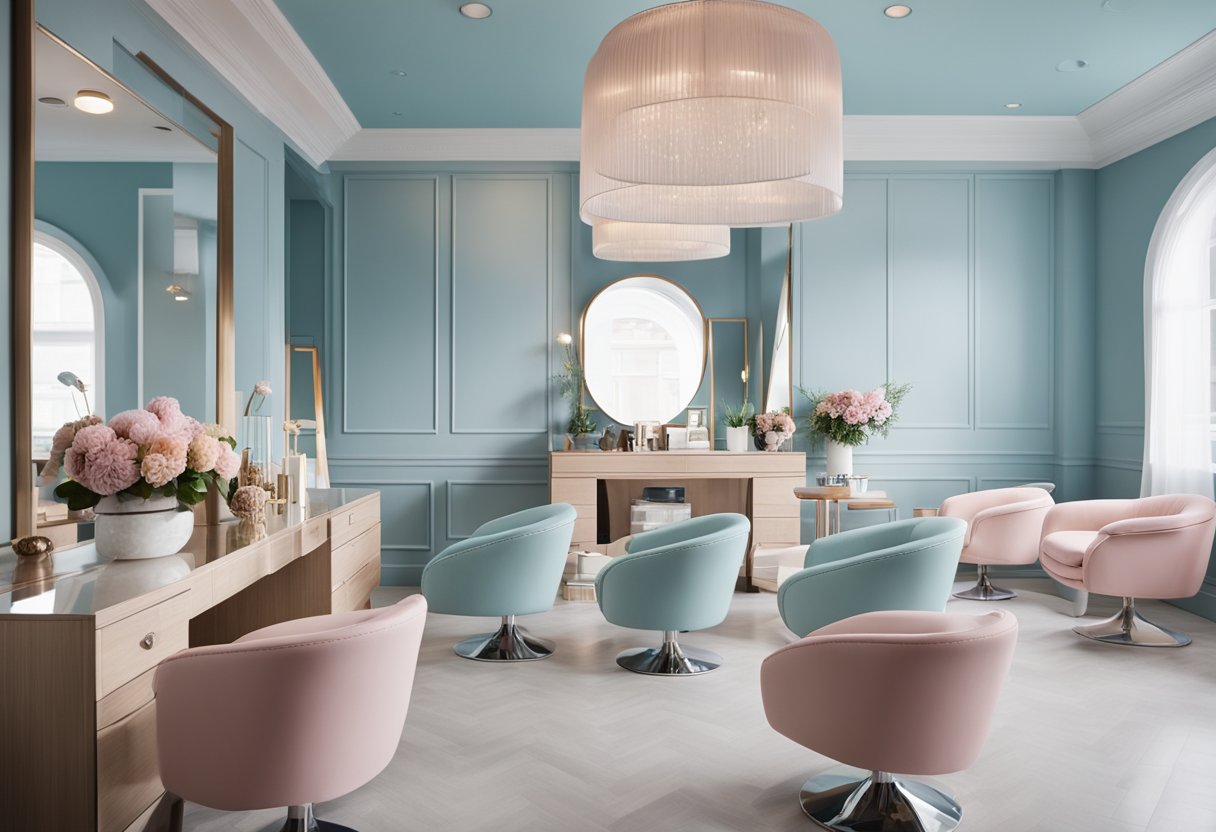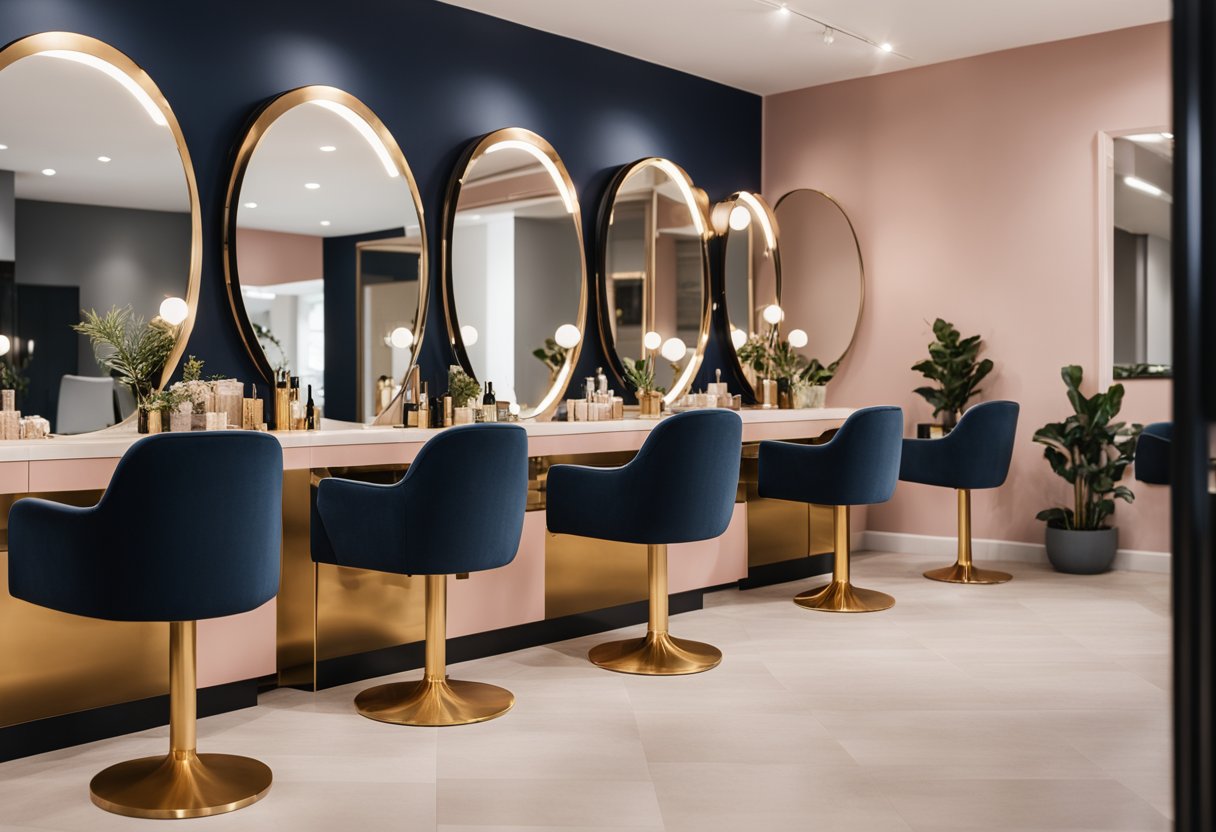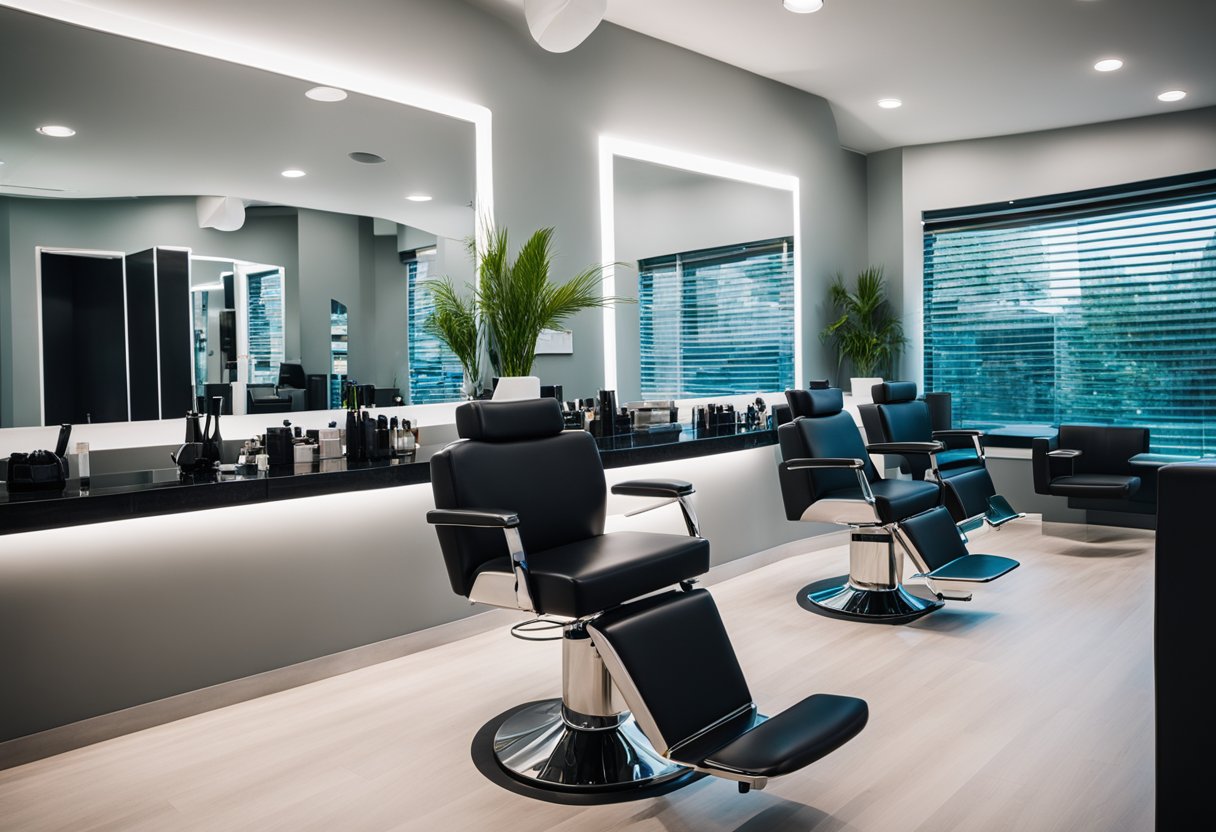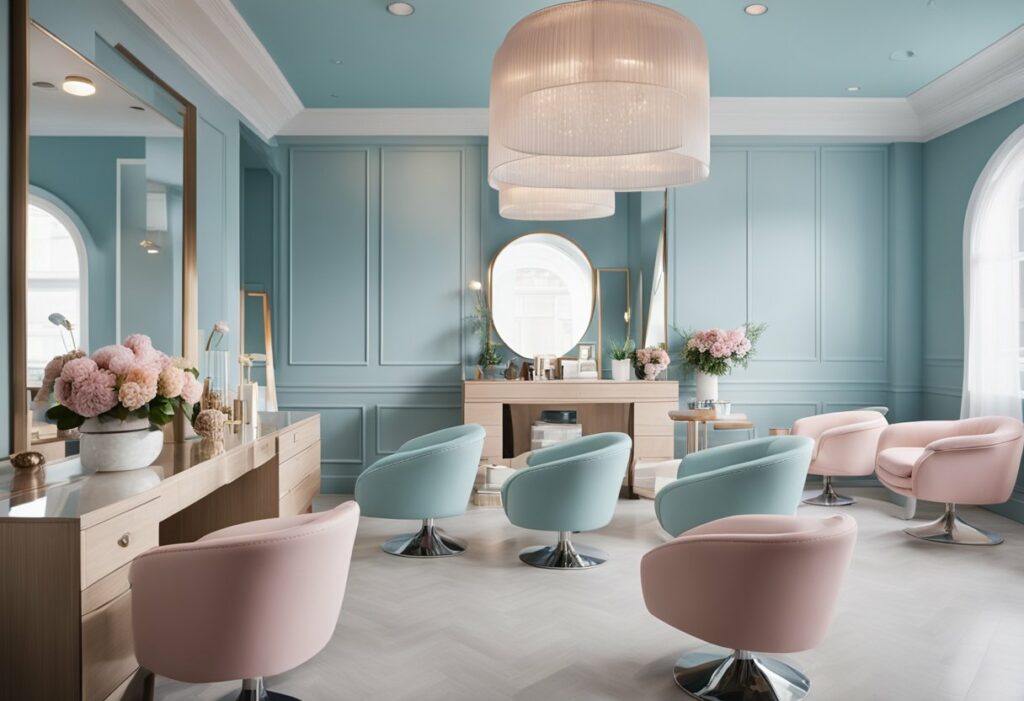Salon Interior Design Color Schemes: The Ultimate Guide to Creating a Stylish and Inviting Space
If you own or manage a salon, you know how important it is to create a relaxing and inviting atmosphere for your clients. One of the key elements in achieving this is through the use of colour. The right colour scheme can set the tone for your salon and create a cohesive look that ties everything together.

When it comes to salon interior design, colour schemes are an essential component. Whether you’re starting from scratch or looking to update your current space, choosing the right colours can be a daunting task. You want to create an environment that is both stylish and functional, while also reflecting your brand and personality. Fortunately, there are many interior design trends and design elements you can incorporate to help you achieve the perfect colour palette for your salon.
In this article, we’ll explore the importance of creating a cohesive salon colour scheme and how to incorporate style and functionality in your salon design. We’ll also answer some frequently asked questions about salon interior design and colour schemes to help you get started.
Creating a Cohesive Salon Colour Scheme

If you’re planning to open a salon or revamp your existing space, choosing the right colour scheme is crucial. A well-designed colour scheme can create a welcoming and relaxing environment for your clients, while also reflecting your brand and style. In this section, we’ll explore how to create a cohesive salon colour scheme that will leave a lasting impression on your clients.
Understanding the Psychology of Colours
Before you start choosing colours for your salon, it’s important to understand the psychology of colours. Different colours can evoke different emotions and moods, so you want to choose colours that align with your brand and the experience you want to create for your clients.
For example, red is a bold and energetic colour that can create a sense of excitement and passion. Tan and neutral colours like beige and white can create a calming and relaxing atmosphere, while green can evoke a sense of freshness and nature. Blue is a popular colour for salons as it can create a sense of tranquillity and relaxation, while black and orange can create a sense of luxury and sophistication. Gold and pink are also popular accent colours that can add a touch of glamour and femininity to your salon.
Choosing Your Salon’s Signature Colours
Once you understand the psychology of colours, it’s time to choose your salon’s signature colours. Your signature colours should reflect your brand and style, while also creating a welcoming and relaxing environment for your clients.
Start by choosing a base colour that will be the foundation for your colour scheme. This could be a neutral tone like beige, grey, or white, or a bold colour like navy, emerald green, or red. Then, choose one or two accent colours that will complement your base colour and add visual interest to your space.
When choosing your accent colours, consider the psychology of colours and how they will make your clients feel. For example, if you want to create a calming and relaxing atmosphere, consider using shades of blue or green as your accent colours. If you want to create a sense of luxury and sophistication, consider using black or gold as your accent colours.
Balancing Neutrals and Accents
When creating a cohesive salon colour scheme, it’s important to balance your neutrals and accents. Too many accent colours can be overwhelming and distracting, while too many neutrals can be boring and uninspiring.
A good rule of thumb is to use your base colour for 60% of your space, your accent colours for 30% of your space, and neutrals for 10% of your space. This will create a balanced and harmonious colour scheme that is visually appealing and welcoming to your clients.
In conclusion, creating a cohesive salon colour scheme requires careful consideration of the psychology of colours, your brand and style, and the balance between neutrals and accents. By following these tips and guidelines, you can create a welcoming and relaxing environment that will leave a lasting impression on your clients.
Incorporating Style and Functionality in Salon Design

When designing your salon, it’s important to balance style and functionality to create a space that is both visually appealing and practical. Here are some tips to help you achieve this balance.
Selecting the Right Furniture and Equipment
Choosing the right furniture and equipment is essential for creating a comfortable and functional salon. Consider the type of services you will be offering and select furniture that is durable and fits the needs of your clients. For example, if you offer hair services, you will need comfortable chairs that can be adjusted to accommodate different heights. If you offer nail services, you will need tables that are the right height for your technicians.
When selecting furniture, consider the style of your salon. If you want a modern, minimalist look, choose furniture with clean lines and simple designs. If you prefer a more traditional or rustic look, consider furniture with warm, natural materials like wood and leather. You can also mix and match styles to create a unique look that reflects your salon’s personality.
Designing for Comfort and Luxury
Creating a luxurious, comfortable environment is key to making your clients feel relaxed and pampered. Use soft textures like velvet and plush carpets to create a warm, inviting atmosphere. Incorporate natural elements like potted plants and feature walls to bring a calming, serene vibe to your space.
You can also add a touch of glamour to your salon with statement lighting like pendant lights or chandeliers. These can create a dramatic effect and add a touch of sophistication to your salon.
Innovative Lighting and Textural Elements
Incorporating innovative lighting and textural elements can add depth and interest to your salon design. Use geometric patterns or graphic elements to create a modern, edgy look. Curved edges and organic shapes can create a softer, more relaxing atmosphere.
Consider using wall coverings like terracotta or blush pink to add warmth and vibrancy to your space. If your salon has high ceilings, you can use statement walls or art deco elements to draw the eye upwards and create a light and airy feel.
By incorporating these design elements into your salon, you can create a space that is both stylish and functional. Whether you’re going for an industrial look or a more retro vibe, there are plenty of ways to make your salon unique and inviting.
Frequently Asked Questions

What hues create a vibrant atmosphere for a salon’s interior?
Vibrant hues, such as red, orange, and yellow, can create an energetic and lively atmosphere for a salon’s interior. These colours are known to stimulate the senses and evoke feelings of excitement and enthusiasm. However, it is important to use these colours in moderation, as they can become overwhelming if used excessively.
Which colour combinations can enhance a beauty salon’s aesthetic appeal?
There are several colour combinations that can enhance a beauty salon’s aesthetic appeal, such as using complementary colours, monochromatic colour schemes, or analogous colour schemes. Complementary colours, such as blue and orange or purple and yellow, can create a striking contrast that draws the eye. Monochromatic colour schemes, which use different shades of the same colour, can create a cohesive and sophisticated look. Analogous colour schemes, which use colours that are adjacent to each other on the colour wheel, can create a harmonious and calming effect.
What are the most popular wall colours for contemporary hair salons?
Neutral wall colours, such as beige, grey, and white, are popular choices for contemporary hair salons. These colours provide a clean and modern backdrop that allows the focus to be on the clients and the services being offered. Additionally, neutral colours can make a space feel larger and more open.
How can I select a colour palette that complements my salon’s branding?
When selecting a colour palette that complements your salon’s branding, it is important to consider your brand’s values, personality, and target audience. For example, if your salon’s brand is focused on luxury and sophistication, you may want to use rich jewel tones, such as emerald green or sapphire blue. On the other hand, if your salon’s brand is focused on natural and organic products, you may want to use earthy tones, such as sage green or terracotta.
What are the trending colours for spa interiors this season?
The trending colours for spa interiors this season are soft and calming hues, such as lavender, blush pink, and pale blue. These colours are known to promote relaxation and tranquillity, which are essential for a spa environment. Additionally, these colours can create a serene and peaceful atmosphere that allows clients to escape from the stresses of daily life.
Which colours should I avoid when designing my salon’s interior?
When designing your salon’s interior, it is best to avoid colours that are too bright or bold, such as neon colours or bright primary colours. These colours can be overwhelming and may not create the relaxing and calming atmosphere that is essential for a salon environment. Additionally, it is best to avoid colours that clash with your brand’s colour palette or that do not complement the overall aesthetic of your salon.



